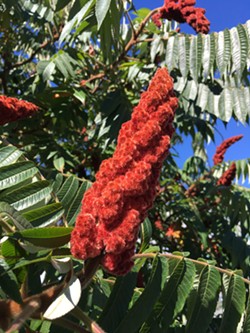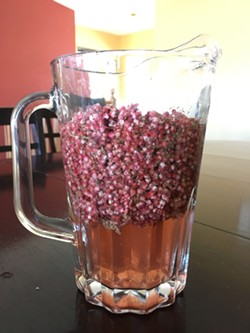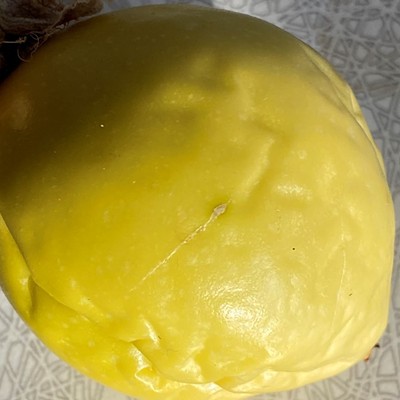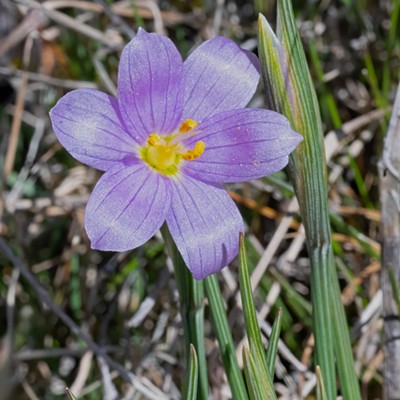Lemonade juice. That was my mistake, I called it “lemonade juice.”
As soon as I asked if they wanted some, my kids were suspicious. Were vegetables involved? Weird sweeteners? Pig intestines? My kids know alternate phrases are code for “something Mom doesn’t want to be up front about.”
They poured a glassful of the stuff anyway. It was cold, pink and sweet with a good pucker at the end. They downed it and went for another glass, this time insisting on knowing what it was they were drinking.
“It” was sumac lemonade, a beverage made with the fruiting heads of sumac trees. The tart berries ripen as summer gives way to fall and, steeped in water, result in a juice-like tea that tastes like a cross between berry juice and lemonade.
I’ve heard about the beverage for years and with plenty of sumac in my yard, both wild and landscaped varieties, I finally gave it a try. The process was surprisingly simple and the results were certainly sour.
After the fact, I checked in with Greg Hodapp, a park ranger at Hells Gate State Park, to make sure I hadn’t poisoned my family. (Next time I’ll try to do the asking beforehand.) He’d been checking on the sumac just a few days prior in anticipation of making sumac tea himself -- he often drinks it hot -- and offered a few tips for consumption. If you’re curious to give it a try, here’s what to do:
- Gather your red sumac berries. You’re looking for a pine tree-shaped berry cluster with fuzzy hairs, not the typical smooth-skinned sort of berry. And they’ve got to be dark red, not white. Unripe, the berries are just tart, but as the berries ripen, Hodapp said, they take on a red raspberry flavor. He’ll sample berries before gathering them to make his beverage -- because they’re fuzzy, you’ll want to spit them out after you’re done chewing on them. The berries are good for more than just taste tests, he said. He’ll chew the berries as a trailside snack, a sort of wild version of Sour Patch Kids.
- Steep your berries in water. Add water to taste -- at least enough to completely cover your berries, but more if you want a milder, more palatable concentration. Breaking up the berries and squeezing them with your fingers or mashing them with a potato masher helps the berries release their flavor faster.
- Let the berries steep. For his tea, Hodapp only steeps his berries for a short time -- less than a minute. If you’re using cold water, though, you might allow your berries to steep for a half-hour, depending on how strong you want it to be.
- Strain the berries and twigs out of the juice. You can use cheesecloth or an old T-shirt to completely separate the sumac berry parts from the liquid and squeeze all the liquid out.
- Sweeten and dilute to taste. After you taste your sumac lemonade or tea, dilute or sweeten your beverage based on preference.
- Drink up. Sumac lemonade is well tolerated by most people. However, sumac is related to mangoes and cashews, so individuals who are sensitive to these foods should avoid consuming sumac. Sumac is also related to poison ivy, poison oak and poison sumac, and while it contains the same compounds, it is not enough to cause a reaction in most people.


























